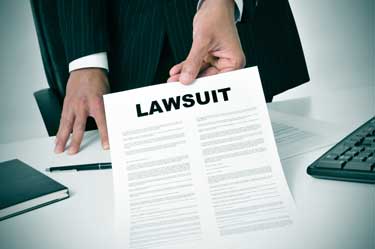How Many Years Do You Have to File a Discrimination Lawsuit

Employees have a limited amount of time to take action against their employer.
How much time do they have? The answer to that question is complicated: the statute of limitations for employment lawsuits vary based on a number of different factors, including the statute you are suing under and the type of conduct alleged.
When considering bringing an employment lawsuit, one of the most important things that employees should keep in mind is that they need to act quickly.
The absolute last thing you want to deal with is losing out on the ability to bring an employment lawsuit simply because the statute of limitations expired. If you are considering bringing a claim, you should speak to a qualified employment lawyer as soon as possible.
Review My Case
How Long Do You Have to File an Employment Law Claim?
Discrimination Claims
Before employees can file a lawsuit for employment discrimination, they may be required to exhaust certain administrative remedies. This typically means filing a claim with the federal, state and/or local agency, such as the federal Equal Employment Opportunity Commission (EEOC) or the Pennsylvania Human Relations Commission (PHRC). For discrimination claims, most workers must generally file their initial administrative claim within 180 days from the adverse action, in order to preserve their Pennsylvania state law claims. Though, the agency filing deadline for most federal discrimination claims is 300 days. However, certain discrimination laws have no administrative exhaustion requirements.
Once a discrimination claim is filed with the EEOC or a state or local agency, an investigation will begin. Assuming the claim is not resolved, the employee will eventually be sent an official 'Right to Sue' letter. At this point, the employee may file a complaint in state or federal court.
With federal claims, employees are provided with 90 days to initiate action after receiving a 'Right to Sue' letter from the EEOC. Though, most state-level discrimination claims have a longer statute of limitations. For example, in Pennsylvania, workers have two years from the dismissal of the claim by the state agency to file a claim in court.
Wrongful Termination Claims
For wrongful termination claims, the statute of limitations will depend partially on the underlying cause of action. For example, if you are filing a wrongful termination claim because you believe that your employer unlawfully fired you as a result of some protected trait, then you are bringing a discrimination claim. To get the EEOC or a state regulator to investigate, you should file with the EEOC within 180 days of the termination.
On the other hand, if you are filing a wrongful termination claim on the grounds that you allege that your employer breached an employment agreement, that is a state level contract law dispute. The statute of limitations will vary based on your individual jurisdiction.
How Does State Law Affect the Employment Claim?
The statute of limitations for various employment law actions are not consistent across the states. For example, each of the following statutes contain slightly different statute of limitations periods and filing deadlines:
- Pennsylvania Human Relations Act
- New Jersey Law Against Discrimination (LAD)
- New York State Human Rights Law
- Massachusetts Fair Employment Practices Act (FEPA)
Of course, if you are bringing a concurrent federal action, which often occurs in employment law cases, it is crucial to take action before the federal statute of limitations expires. It is important to consult with an experienced employment attorney regarding the various filing deadlines and statute of limitation periods for all such claims.
Employment Statute of Limitations: Determining the Starting Point Can Be Difficult
In some employment law cases, disputes arise regarding when exactly the statute of limitations started to run. This is not typically an issue in wrongful termination lawsuits, as it is generally acknowledged that the wrongful termination statute of limitations clock begins ticking on the day the employee was fired.
However with other claims, such as those involving a hostile work environment, determining a starting point can be more challenging. When does the hostile work environment statute of limitations start? Typically, the statute of limitations for employment harassment starts on the date that the most recent incident contributing to the hostile work environment occurred. In cases involving ongoing workplace harassment, misconduct that occurred several years ago may still be actionable if the latest incident occurred within the relevant statute of limitations.
Get Help From an Employment Lawyer Today
At Console Mattiacci Law, our employment lawyers handle the full range of workplace issues. Since our inception in 1990, we have worked tirelessly to provide the best legal representation to employees. We understand that every client's situation is unique, and our attorneys will provide guidance that is carefully tailored to fit your needs and goals.
With a main office in Philadelphia, Pennsylvania and an additional location in Moorestown, New Jersey, we represent employees in Pennsylvania, New Jersey, New York, and Massachusetts. For a fully confidential review of your case, please do not hesitate to contact our law office or call us at 215-545-7676 today to arrange an initial employment law consultation.
How Many Years Do You Have to File a Discrimination Lawsuit
Source: https://www.consolelaw.com/statute-of-limitations-for-employment-lawsuit/